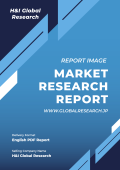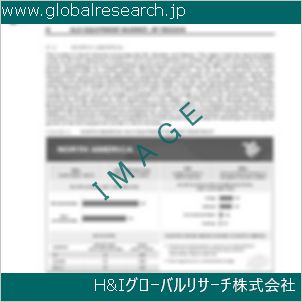1 Rigid Flame Retardant Foam Market Overview
1.1 Product Definition
1.2 Rigid Flame Retardant Foam Segment by Type
1.2.1 Global Rigid Flame Retardant Foam Market Value Growth Rate Analysis by Type 2022 VS 2029
1.2.2 Open Cell
1.2.3 Close Cell
1.3 Rigid Flame Retardant Foam Segment by Application
1.3.1 Global Rigid Flame Retardant Foam Market Value Growth Rate Analysis by Application: 2022 VS 2029
1.3.2 Residential
1.3.3 Commercial
1.4 Global Market Growth Prospects
1.4.1 Global Rigid Flame Retardant Foam Production Value Estimates and Forecasts (2018-2029)
1.4.2 Global Rigid Flame Retardant Foam Production Capacity Estimates and Forecasts (2018-2029)
1.4.3 Global Rigid Flame Retardant Foam Production Estimates and Forecasts (2018-2029)
1.4.4 Global Rigid Flame Retardant Foam Market Average Price Estimates and Forecasts (2018-2029)
1.5 Assumptions and Limitations
2 Market Competition by Manufacturers
2.1 Global Rigid Flame Retardant Foam Production Market Share by Manufacturers (2018-2023)
2.2 Global Rigid Flame Retardant Foam Production Value Market Share by Manufacturers (2018-2023)
2.3 Global Key Players of Rigid Flame Retardant Foam, Industry Ranking, 2021 VS 2022 VS 2023
2.4 Global Rigid Flame Retardant Foam Market Share by Company Type (Tier 1, Tier 2 and Tier 3)
2.5 Global Rigid Flame Retardant Foam Average Price by Manufacturers (2018-2023)
2.6 Global Key Manufacturers of Rigid Flame Retardant Foam, Manufacturing Base Distribution and Headquarters
2.7 Global Key Manufacturers of Rigid Flame Retardant Foam, Product Offered and Application
2.8 Global Key Manufacturers of Rigid Flame Retardant Foam, Date of Enter into This Industry
2.9 Rigid Flame Retardant Foam Market Competitive Situation and Trends
2.9.1 Rigid Flame Retardant Foam Market Concentration Rate
2.9.2 Global 5 and 10 Largest Rigid Flame Retardant Foam Players Market Share by Revenue
2.10 Mergers & Acquisitions, Expansion
3 Rigid Flame Retardant Foam Production by Region
3.1 Global Rigid Flame Retardant Foam Production Value Estimates and Forecasts by Region: 2018 VS 2022 VS 2029
3.2 Global Rigid Flame Retardant Foam Production Value by Region (2018-2029)
3.2.1 Global Rigid Flame Retardant Foam Production Value Market Share by Region (2018-2023)
3.2.2 Global Forecasted Production Value of Rigid Flame Retardant Foam by Region (2024-2029)
3.3 Global Rigid Flame Retardant Foam Production Estimates and Forecasts by Region: 2018 VS 2022 VS 2029
3.4 Global Rigid Flame Retardant Foam Production by Region (2018-2029)
3.4.1 Global Rigid Flame Retardant Foam Production Market Share by Region (2018-2023)
3.4.2 Global Forecasted Production of Rigid Flame Retardant Foam by Region (2024-2029)
3.5 Global Rigid Flame Retardant Foam Market Price Analysis by Region (2018-2023)
3.6 Global Rigid Flame Retardant Foam Production and Value, Year-over-Year Growth
3.6.1 North America Rigid Flame Retardant Foam Production Value Estimates and Forecasts (2018-2029)
3.6.2 Europe Rigid Flame Retardant Foam Production Value Estimates and Forecasts (2018-2029)
3.6.3 China Rigid Flame Retardant Foam Production Value Estimates and Forecasts (2018-2029)
3.6.4 Japan Rigid Flame Retardant Foam Production Value Estimates and Forecasts (2018-2029)
4 Rigid Flame Retardant Foam Consumption by Region
4.1 Global Rigid Flame Retardant Foam Consumption Estimates and Forecasts by Region: 2018 VS 2022 VS 2029
4.2 Global Rigid Flame Retardant Foam Consumption by Region (2018-2029)
4.2.1 Global Rigid Flame Retardant Foam Consumption by Region (2018-2023)
4.2.2 Global Rigid Flame Retardant Foam Forecasted Consumption by Region (2024-2029)
4.3 North America
4.3.1 North America Rigid Flame Retardant Foam Consumption Growth Rate by Country: 2018 VS 2022 VS 2029
4.3.2 North America Rigid Flame Retardant Foam Consumption by Country (2018-2029)
4.3.3 United States
4.3.4 Canada
4.4 Europe
4.4.1 Europe Rigid Flame Retardant Foam Consumption Growth Rate by Country: 2018 VS 2022 VS 2029
4.4.2 Europe Rigid Flame Retardant Foam Consumption by Country (2018-2029)
4.4.3 Germany
4.4.4 France
4.4.5 U.K.
4.4.6 Italy
4.4.7 Russia
4.5 Asia Pacific
4.5.1 Asia Pacific Rigid Flame Retardant Foam Consumption Growth Rate by Region: 2018 VS 2022 VS 2029
4.5.2 Asia Pacific Rigid Flame Retardant Foam Consumption by Region (2018-2029)
4.5.3 China
4.5.4 Japan
4.5.5 South Korea
4.5.6 China Taiwan
4.5.7 Southeast Asia
4.5.8 India
4.6 Latin America, Middle East & Africa
4.6.1 Latin America, Middle East & Africa Rigid Flame Retardant Foam Consumption Growth Rate by Country: 2018 VS 2022 VS 2029
4.6.2 Latin America, Middle East & Africa Rigid Flame Retardant Foam Consumption by Country (2018-2029)
4.6.3 Mexico
4.6.4 Brazil
4.6.5 Turkey
5 Segment by Type
5.1 Global Rigid Flame Retardant Foam Production by Type (2018-2029)
5.1.1 Global Rigid Flame Retardant Foam Production by Type (2018-2023)
5.1.2 Global Rigid Flame Retardant Foam Production by Type (2024-2029)
5.1.3 Global Rigid Flame Retardant Foam Production Market Share by Type (2018-2029)
5.2 Global Rigid Flame Retardant Foam Production Value by Type (2018-2029)
5.2.1 Global Rigid Flame Retardant Foam Production Value by Type (2018-2023)
5.2.2 Global Rigid Flame Retardant Foam Production Value by Type (2024-2029)
5.2.3 Global Rigid Flame Retardant Foam Production Value Market Share by Type (2018-2029)
5.3 Global Rigid Flame Retardant Foam Price by Type (2018-2029)
6 Segment by Application
6.1 Global Rigid Flame Retardant Foam Production by Application (2018-2029)
6.1.1 Global Rigid Flame Retardant Foam Production by Application (2018-2023)
6.1.2 Global Rigid Flame Retardant Foam Production by Application (2024-2029)
6.1.3 Global Rigid Flame Retardant Foam Production Market Share by Application (2018-2029)
6.2 Global Rigid Flame Retardant Foam Production Value by Application (2018-2029)
6.2.1 Global Rigid Flame Retardant Foam Production Value by Application (2018-2023)
6.2.2 Global Rigid Flame Retardant Foam Production Value by Application (2024-2029)
6.2.3 Global Rigid Flame Retardant Foam Production Value Market Share by Application (2018-2029)
6.3 Global Rigid Flame Retardant Foam Price by Application (2018-2029)
7 Key Companies Profiled
7.1 Bostik
7.1.1 Bostik Rigid Flame Retardant Foam Corporation Information
7.1.2 Bostik Rigid Flame Retardant Foam Product Portfolio
7.1.3 Bostik Rigid Flame Retardant Foam Production, Value, Price and Gross Margin (2018-2023)
7.1.4 Bostik Main Business and Markets Served
7.1.5 Bostik Recent Developments/Updates
7.2 Akfix
7.2.1 Akfix Rigid Flame Retardant Foam Corporation Information
7.2.2 Akfix Rigid Flame Retardant Foam Product Portfolio
7.2.3 Akfix Rigid Flame Retardant Foam Production, Value, Price and Gross Margin (2018-2023)
7.2.4 Akfix Main Business and Markets Served
7.2.5 Akfix Recent Developments/Updates
7.3 ODICE
7.3.1 ODICE Rigid Flame Retardant Foam Corporation Information
7.3.2 ODICE Rigid Flame Retardant Foam Product Portfolio
7.3.3 ODICE Rigid Flame Retardant Foam Production, Value, Price and Gross Margin (2018-2023)
7.3.4 ODICE Main Business and Markets Served
7.3.5 ODICE Recent Developments/Updates
7.4 Soudal
7.4.1 Soudal Rigid Flame Retardant Foam Corporation Information
7.4.2 Soudal Rigid Flame Retardant Foam Product Portfolio
7.4.3 Soudal Rigid Flame Retardant Foam Production, Value, Price and Gross Margin (2018-2023)
7.4.4 Soudal Main Business and Markets Served
7.4.5 Soudal Recent Developments/Updates
7.5 Abesco
7.5.1 Abesco Rigid Flame Retardant Foam Corporation Information
7.5.2 Abesco Rigid Flame Retardant Foam Product Portfolio
7.5.3 Abesco Rigid Flame Retardant Foam Production, Value, Price and Gross Margin (2018-2023)
7.5.4 Abesco Main Business and Markets Served
7.5.5 Abesco Recent Developments/Updates
7.6 General Plastic Manufacturing Company
7.6.1 General Plastic Manufacturing Company Rigid Flame Retardant Foam Corporation Information
7.6.2 General Plastic Manufacturing Company Rigid Flame Retardant Foam Product Portfolio
7.6.3 General Plastic Manufacturing Company Rigid Flame Retardant Foam Production, Value, Price and Gross Margin (2018-2023)
7.6.4 General Plastic Manufacturing Company Main Business and Markets Served
7.6.5 General Plastic Manufacturing Company Recent Developments/Updates
8 Industry Chain and Sales Channels Analysis
8.1 Rigid Flame Retardant Foam Industry Chain Analysis
8.2 Rigid Flame Retardant Foam Key Raw Materials
8.2.1 Key Raw Materials
8.2.2 Raw Materials Key Suppliers
8.3 Rigid Flame Retardant Foam Production Mode & Process
8.4 Rigid Flame Retardant Foam Sales and Marketing
8.4.1 Rigid Flame Retardant Foam Sales Channels
8.4.2 Rigid Flame Retardant Foam Distributors
8.5 Rigid Flame Retardant Foam Customers
9 Rigid Flame Retardant Foam Market Dynamics
9.1 Rigid Flame Retardant Foam Industry Trends
9.2 Rigid Flame Retardant Foam Market Drivers
9.3 Rigid Flame Retardant Foam Market Challenges
9.4 Rigid Flame Retardant Foam Market Restraints
10 Research Finding and Conclusion
11 Methodology and Data Source
11.1 Methodology/Research Approach
11.1.1 Research Programs/Design
11.1.2 Market Size Estimation
11.1.3 Market Breakdown and Data Triangulation
11.2 Data Source
11.2.1 Secondary Sources
11.2.2 Primary Sources
11.3 Author List
11.4 Disclaimer
| ※参考情報 硬質難燃フォームは、火に強く、耐久性を持つ素材として、さまざまな用途で広く利用されています。このタイプのフォームは、特に建築、自動車、家電などの分野で重要な役割を果たしています。その特徴や種類、用途、さらには関連する技術について詳しく説明いたします。 硬質難燃フォームは、一般的に軽量でありながら、優れた機械的強度と断熱性能を持つことが特徴です。これらのフォームは主にポリウレタンやポリスチレンといった合成樹脂から製造されますが、難燃剤を添加することによって、火災時の安全性を高めています。難燃剤は、フォームの燃焼を抑制するだけでなく、熱の放出を抑えることで、火の広がりを防ぎます。 このような材料の一般的な特性として、優れた断熱性能、軽量性、そして強度が挙げられます。断熱性能に関しては、外部からの熱を遮断し、エネルギー効率の向上に寄与します。また、軽量性は、さまざまな用途において加工や運搬が容易であることを意味しています。強度については、構造物としての役割を担う際に重要な要素であり、物理的な衝撃や荷重に対する耐性があります。 硬質難燃フォームの種類としては、主にポリウレタンフォーム、発泡ポリスチレン、フェノールフォームなどがあります。ポリウレタンフォームは、柔軟性と耐久性が高く、様々な密度の製品が存在するため、多様な用途に対応可能です。発泡ポリスチレンは、低コストで製造が容易であり、ペレット状の原料を使って成形することで軽量なフォームが得られます。フェノールフォームは、最も優れた難燃性能を持ち、高温環境でも使用されることが多いです。 硬質難燃フォームは、その特性から多岐にわたる用途で利用されています。まず、建築分野では、断熱材としての役割を果たし、エネルギー効率の向上に寄与しています。また、防火性能を求められる場所では、重要な防火措置として使用されています。さらに、冷蔵庫や冷凍庫などの家電製品や、自動車の内装材としても広く用いられています。これらの用途では、性能や安全性が求められるため、硬質難燃フォームの特性が大いに役立っています。 関連技術としては、難燃剤の開発が挙げられます。難燃剤の選択や配合比率によって、フォームの性能をさらに向上させることが可能です。たとえば、ハロゲン系難燃剤や無機系難燃剤、さらには有機系難燃剤など、さまざまなタイプの難燃剤が研究されています。これにより、より高い難燃性能を持つフォームの開発が進んでいます。また、最近では環境への配慮から、従来の難燃剤に代わる新しい素材の開発も進められています。 硬質難燃フォームは、今後も持続可能な発展が求められる材料です。エネルギー効率の向上、環境への負荷軽減、そして安全性の向上といった観点から、開発が続けられることが期待されています。新たな技術革新や素材の進化により、これからの市場のニーズに応える柔軟な素材として、その重要性はますます高まることでしょう。これに伴い、硬質難燃フォームの供給者は、品質管理や製品の安全性に対する取り組みを強化し、利用者に対して信頼性の高い製品を提供することが求められます。 このように、硬質難燃フォームは、現代社会において非常に重要な役割を果たしている素材です。その優れた特性と多様な応用可能性から、今後の発展が非常に楽しみな分野となっています。 |
❖ 免責事項 ❖
http://www.globalresearch.jp/disclaimer


-gr.jpg)









